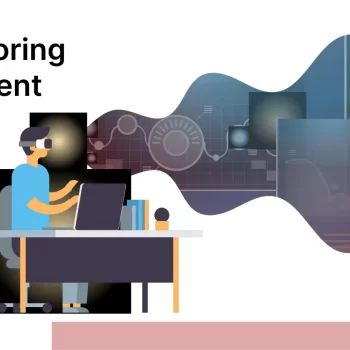As we gaze into 2025 and beyond, it’s easy to feel a sense of déjà vu with the trends MSPs are advised to follow.
Sure, these trends may echo the familiar refrains of 2024 or even earlier years, but here’s the catch: 2025 is different.
The recent, unprecedented acceleration in technological evolution and adoption has transformed these once ‘good-to-have’ trends into ‘must-have’ imperatives.
For MSPs, this means that the familiar playbook, while still relevant, needs a serious upgrade.
So, let’s get to it and look at these trends!
Related article: How MSPs play an invaluable role in Professional Service Automation
Advanced cybersecurity standards for MSPs
MSPs are increasingly focusing on bolstering their cybersecurity capabilities. The increasing intelligence of cyber threats spearheads this shift. Marginal Service Providers understand that enhancing their security offerings is mandatory to remain competitive in the market. It involves upgrading their existing protocols while adopting new, more advanced cybersecurity strategies.
Managed Detection and Response (MDR) services are becoming particularly important, as they allow MSPs to proactively oversee, identify, and respond to threats in real time.
Also, MSPs are prioritizing cybersecurity consulting more heavily. This signifies the importance of guiding clients through the complexities of cyber threats.
HIGHLIGHTS
Evolving cyber threats: Rapid changes in cyber threats necessitate advanced and adaptive security measures from MSPs.
Emphasis on security consulting: Providing expert guidance and consulting services is becoming a key focus area for MSPs.
MDR services: Providing Managed Detection and Response services to help build a proactive security mindset.

Meaningful AI and automation
MSPs will need to rapidly adopt AI and automation to stay ahead in a highly competitive market. It stems from the fast-growing demand for speed, accuracy, and convenience in IT Service Management. After all, AI and automation are about reducing workload while enhancing the quality of services. MSPs can streamline their processes, from ticketing to maintenance, ensuring faster and more accurate service delivery.
The integration of AI into Marginal Service Providers’ operations will also enable predictive maintenance, a proactive approach that anticipates issues before they escalate into major problems. It is critical for maintaining system uptime and ensuring client satisfaction. Moreover, the rapid collection and analysis of interaction data through AI-driven tools will change personalized support is offered.
HIGHLIGHTS
Automated ticketing systems: Streamlining issue resolution processes for quicker service management.
Predictive maintenance: Utilizing AI to foresee and prevent potential system issues, enhancing reliability and reducing downtime.
Meaningful data insights: Enabling rapid and accurate analysis of interaction data for more personalized customer support.
Resource allocation: AI-driven automation allows MSPs to optimize resource allocation so that the right resource is available at the right time.
Effective hybrid service management
Marginal Service Providers must adapt to meet the demands of hybrid service management. This blend of remote and in-office work environments has brought new challenges and complexities in service delivery. MSPs must focus on creating smooth integration of services that cater to physical and virtual infrastructures. It can ensure consistency in service quality and accessibility, irrespective of the client’s location or working model.
MSPs will also have to develop strategies that address the unique security and connectivity challenges of hybrid environments. As clients navigate between on-premise and remote operations, MSPs should offer flexible yet robust solutions that are adaptable to varying scenarios.
HIGHLIGHTS
Hassle-free integration: Ensuring consistent service quality in both physical and remote work settings.
Flexible infrastructure support: Adapting services to support diverse and changing client infrastructure needs.
Reliable connectivity: Offering robust solutions to maintain uninterrupted connectivity across all work scenarios.
Seamless distributed workforce support
MSPs will need to focus extensively on supporting distributed workforces. The shift requires them to provide solutions that ensure seamless connectivity, robust security, and smart collaboration for remote teams. MSPs will play an influential part in enabling this transition by addressing the challenges of remote work environments head-on.
MSPs must also ensure that their service offerings support distributed workforces. It involves ensuring reliable and secure remote access to company networks, implementing cloud-based solutions for ease of access, and providing robust cybersecurity measures. Furthermore, MSPs will need to offer support for collaboration tools and technologies that enable location-agnostic communication and teamwork.
HIGHLIGHTS
Robust remote access: Providing secure and reliable access to company networks from remote locations.
Cloud-based integration: Offering easy access to resources and applications through cloud solutions.
Collaboration tool support: Enabling comprehensive support for collaboration tools to enable remote teamwork.
As you can imagine, embracing following these trends is as much about survival as thriving.
After all, the technology ecosystem is more dynamic and unforgiving than ever. The pace of change is exponential, as the repercussions of not taking these trends seriously can be potentially disastrous. Here’s to an MSP-friendly 2025 and beyond!



















